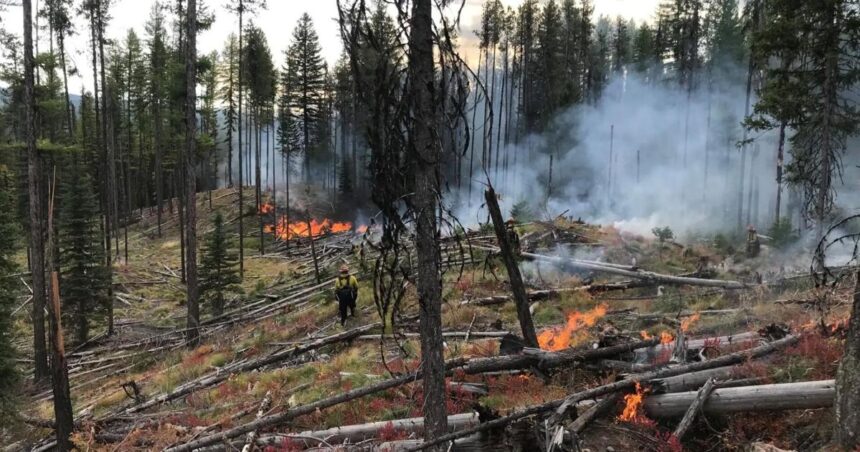A prescribed burn near Ovando, originally planned to cover 65 acres, has now expanded to over 200 acres, becoming the Nevada Lake Fire.
The fire escaped containment on Monday, with efforts to control it not successful, according to InciWeb, a disaster management database managed by the Forest Service. The fire is now located on the border between Powell and Lewis and Clark counties.
The burn was a joint effort planned by Montana Fish, Wildlife and Parks, the Montana Department of Natural Resources and Conservation, and the Blackfoot Challenge, a community conservation group in Ovando. Despite its significant growth earlier in the week, the fire has remained stable in size since Wednesday.
Prescribed burns are intentional fires used to clear excess ground fuel within a controlled perimeter. This practice dates back to the latter half of the 20th century in the United States as a strategy to reduce the risk of large wildfires through controlled burning of excess fuels. Although prescribed burns are a cheaper alternative to forest thinning, they are only conducted when specific weather conditions are met.
While the Montana wildfire season has been longer than usual due to hot and dry conditions, prescribed burns are scheduled well in advance. However, cancellations and postponements have occurred due to the weather.
Prescribed burns are not without risks, with escaped fires being uncommon but a concern among land managers. The benefits of prescribed burns for sustainable agriculture, ecological health, and fire protection have been recognized by experts like Robbie Magnan, director of the Fort Peck Tribes’ Fish and Wildlife Department.
New technology, such as drones produced by Robotics 88, is now being used to plan, map, monitor, and assess prescribed burns. These drones provide real-time data during fires and aid in post-burn assessments.
Despite challenges in conducting prescribed burns, experts like Erik Peterson emphasize the long-term benefits of this practice for ecosystem health. Adaptation to changing conditions and monitoring the effects of burns are crucial in implementing prescribed fire successfully.
Heading into the winter season, broadcast burns may be limited, with pile burning becoming a preferred method due to snowy conditions that prevent fire spread. Robotics 88 anticipates a decrease in burn operations during winter but will continue promoting their technology for future use in prescribed fire management.
Overall, prescribed burns remain a valuable tool for managing fire risk and promoting ecosystem health when executed safely and effectively.




